Comparison of spectra run 3 vs run 8
Below is an attempt to look at spectra in run 8 vs run 3 d+Au.
I've scanned through almost all of the 210020 events in d+Au, asking for |vz|<30 cm, bbce>=1377, which resulted in a total sample of 7.951203 M events.
A reminder that the BBCE cut >=1377 reproduced the refmult distribution quite well, see:
http://drupal.star.bnl.gov/STAR/blog-entry/dunlop/2008/oct/14/first-attempt-do-centrality-using-bbc-d-au-run-8
To reproduce the cuts in the Run 3 d+Au paper, took
|dcaGlobal| < 1
|eta| < 0.5
nFitPoints>=20
This resulted in 3.2789e4 tracks. To compare to run 3 0-20% events, I took a flat efficiency of 0.87, and plotted the invariant yields, both
cutting on global pt and on primary pt. Note that I had already cut on primary pt>4 before plotting global pt, which likely affects the first few bins.
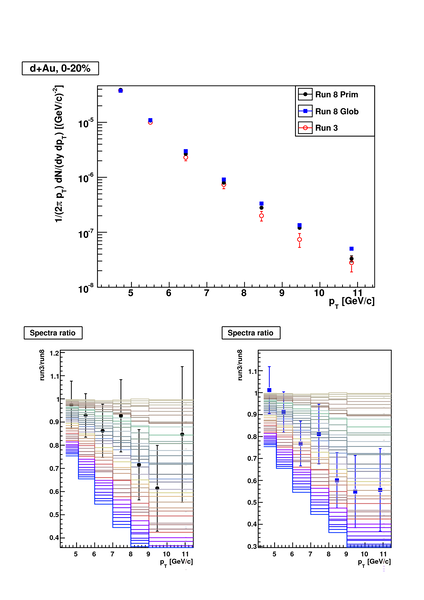
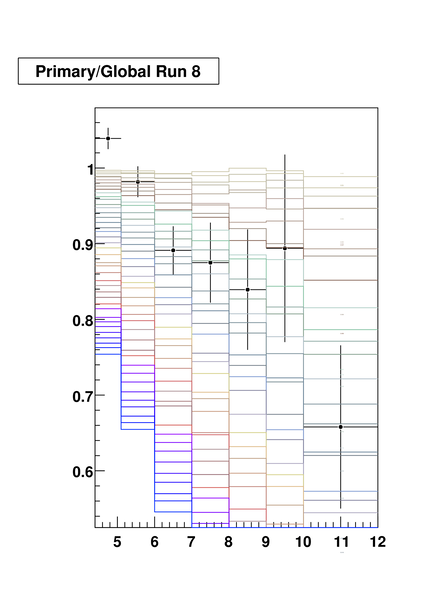
Run 8 is clearly above run 3, more so for the globals. This has two potential sources: either the momentum resolution is worse in run 8, or there is background in the run 8 spectra. The lines are from a calculation of the effect of pt smearing, assuming that the spectra are reproduced by a levy function
A*pow((1+(mt-m0)/(nT),-n), with parameters m0=0.13828, T = 0.131, and n=9.7.
and
sigma_pt/pt = 0.01 + b*pt, with varying b. I did a chi-square analysis of the points, results below. 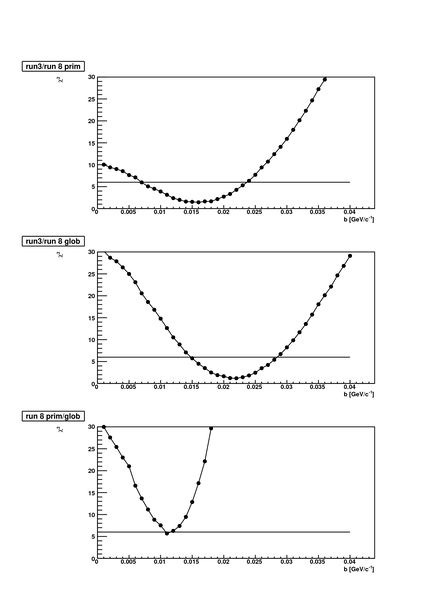
With this chi-square analysis, the best fit appears to be that the run 8 primaries have a resolution of 1% + 1.6%*pt, globals a resolution of 1%+2.2%*pt, and the difference between globals and primaries in run 8 is well described by a resolution of ~1%+1.2%*pt
I checked the latter directly from d(1/pt). Below is ( (1/pt_prim) - (1/pt_glob))/(1/pt_glob), fit to gaussians. The result wants ~1.1%+1.4%*pt.
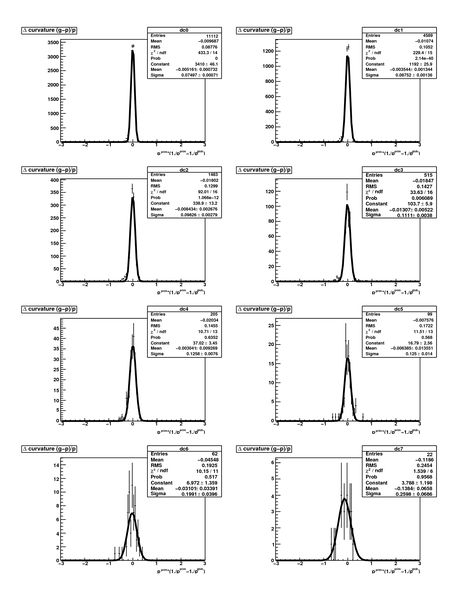
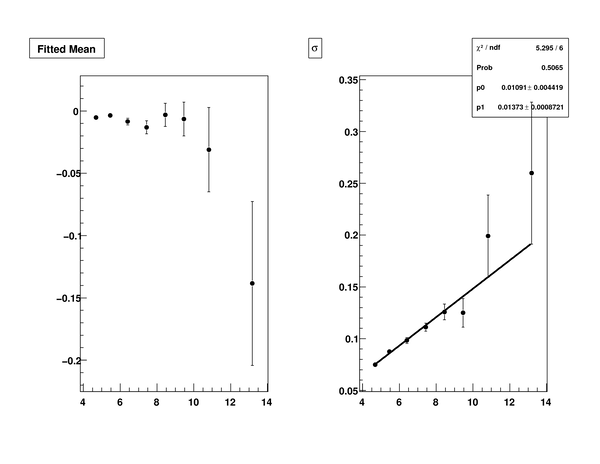
These resolutions are quite a bit larger than expected from run 3. For comparison, the primaries
in run 3 were corrected using a resolution of .5% + 0.4%*pt, and the globals from embedding had resolutions ~1%+0.7%*pt,
see http://www.star.bnl.gov/protected/highpt/jklay/dAu/minbias/dAu.Minbias.html
The h-/h+ ratios also seem somewhat off. They are shown below, for globals and primaries. They have been fit to a shifted levy function, in which
the pt of the numerator was shifted to pt*(1+shift*pt), and the denominator to pt*(1-shift*pt). Shift seems to want to be ~0.004-0.005 / GeV, which is quite large,
on the order of the resolution we expected in run 3.
.png)
In summary, it appears that we may have an issue with momentum resolution and distortions in run 8. It would be good to independently confirm this with invariant masses: K0, J/Psi, Upsilon, etc.
- dunlop's blog
- Login or register to post comments
